Zehua Cheng
Affinity-Graph-Guided Contractive Learning for Pretext-Free Medical Image Segmentation with Minimal Annotation
Oct 14, 2024



Abstract:The combination of semi-supervised learning (SemiSL) and contrastive learning (CL) has been successful in medical image segmentation with limited annotations. However, these works often rely on pretext tasks that lack the specificity required for pixel-level segmentation, and still face overfitting issues due to insufficient supervision signals resulting from too few annotations. Therefore, this paper proposes an affinity-graph-guided semi-supervised contrastive learning framework (Semi-AGCL) by establishing additional affinity-graph-based supervision signals between the student and teacher network, to achieve medical image segmentation with minimal annotations without pretext. The framework first designs an average-patch-entropy-driven inter-patch sampling method, which can provide a robust initial feature space without relying on pretext tasks. Furthermore, the framework designs an affinity-graph-guided loss function, which can improve the quality of the learned representation and the model generalization ability by exploiting the inherent structure of the data, thus mitigating overfitting. Our experiments indicate that with merely 10% of the complete annotation set, our model approaches the accuracy of the fully annotated baseline, manifesting a marginal deviation of only 2.52%. Under the stringent conditions where only 5% of the annotations are employed, our model exhibits a significant enhancement in performance surpassing the second best baseline by 23.09% on the dice metric and achieving an improvement of 26.57% on the notably arduous CRAG and ACDC datasets.
SoccerNet 2024 Challenges Results
Sep 16, 2024
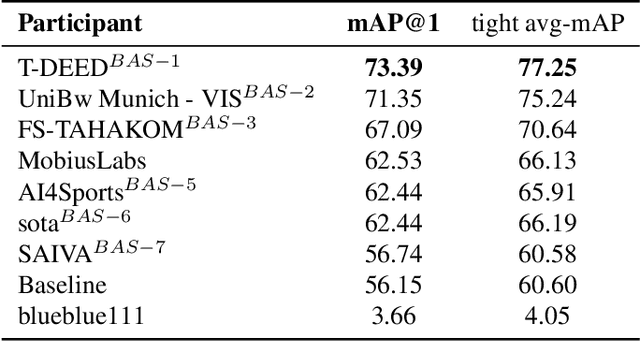
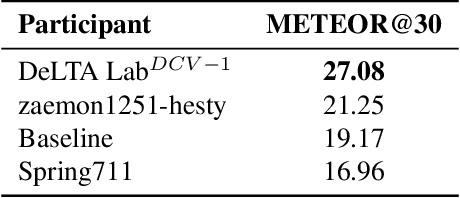
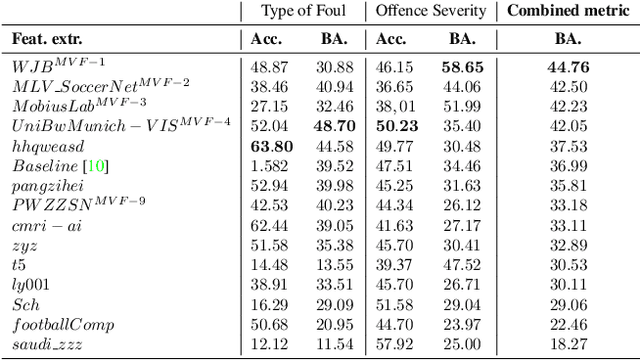
Abstract:The SoccerNet 2024 challenges represent the fourth annual video understanding challenges organized by the SoccerNet team. These challenges aim to advance research across multiple themes in football, including broadcast video understanding, field understanding, and player understanding. This year, the challenges encompass four vision-based tasks. (1) Ball Action Spotting, focusing on precisely localizing when and which soccer actions related to the ball occur, (2) Dense Video Captioning, focusing on describing the broadcast with natural language and anchored timestamps, (3) Multi-View Foul Recognition, a novel task focusing on analyzing multiple viewpoints of a potential foul incident to classify whether a foul occurred and assess its severity, (4) Game State Reconstruction, another novel task focusing on reconstructing the game state from broadcast videos onto a 2D top-view map of the field. Detailed information about the tasks, challenges, and leaderboards can be found at https://www.soccer-net.org, with baselines and development kits available at https://github.com/SoccerNet.
Does DetectGPT Fully Utilize Perturbation? Selective Perturbation on Model-Based Contrastive Learning Detector would be Better
Feb 04, 2024



Abstract:The burgeoning capabilities of large language models (LLMs) have raised growing concerns about abuse. DetectGPT, a zero-shot metric-based unsupervised machine-generated text detector, first introduces perturbation and shows great performance improvement. However, DetectGPT's random perturbation strategy might introduce noise, limiting the distinguishability and further performance improvements. Moreover, its logit regression module relies on setting the threshold, which harms the generalizability and applicability of individual or small-batch inputs. Hence, we propose a novel detector, Pecola, which uses selective strategy perturbation to relieve the information loss caused by random masking, and multi-pair contrastive learning to capture the implicit pattern information during perturbation, facilitating few-shot performance. The experiments show that Pecola outperforms the SOTA method by 1.20% in accuracy on average on four public datasets. We further analyze the effectiveness, robustness, and generalization of our perturbation method.
Power Efficient Video Super-Resolution on Mobile NPUs with Deep Learning, Mobile AI & AIM 2022 challenge: Report
Nov 07, 2022



Abstract:Video super-resolution is one of the most popular tasks on mobile devices, being widely used for an automatic improvement of low-bitrate and low-resolution video streams. While numerous solutions have been proposed for this problem, they are usually quite computationally demanding, demonstrating low FPS rates and power efficiency on mobile devices. In this Mobile AI challenge, we address this problem and propose the participants to design an end-to-end real-time video super-resolution solution for mobile NPUs optimized for low energy consumption. The participants were provided with the REDS training dataset containing video sequences for a 4X video upscaling task. The runtime and power efficiency of all models was evaluated on the powerful MediaTek Dimensity 9000 platform with a dedicated AI processing unit capable of accelerating floating-point and quantized neural networks. All proposed solutions are fully compatible with the above NPU, demonstrating an up to 500 FPS rate and 0.2 [Watt / 30 FPS] power consumption. A detailed description of all models developed in the challenge is provided in this paper.
Symphony Generation with Permutation Invariant Language Model
May 10, 2022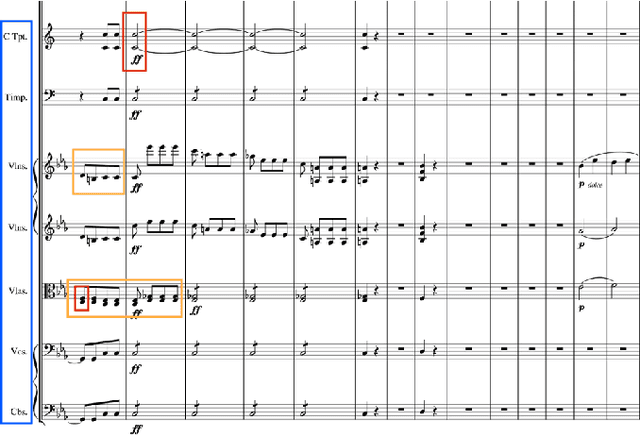
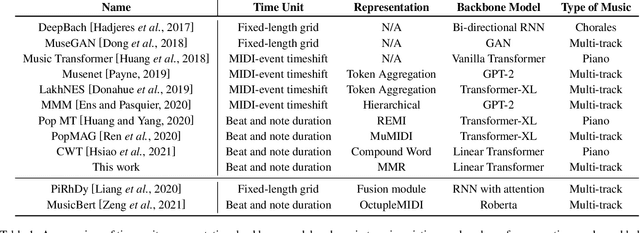

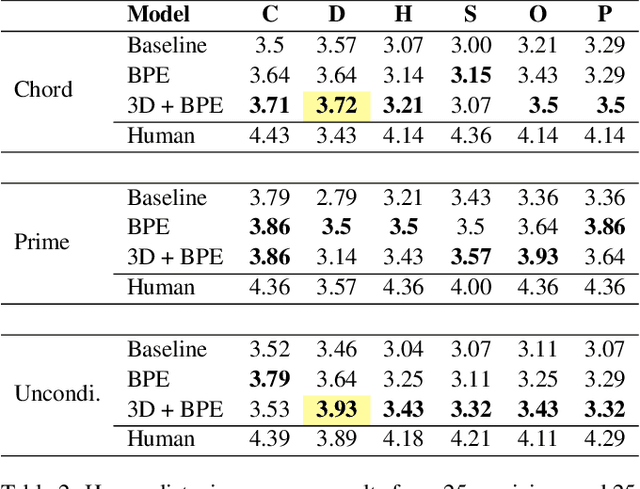
Abstract:In this work, we present a symbolic symphony music generation solution, SymphonyNet, based on a permutation invariant language model. To bridge the gap between text generation and symphony generation task, we propose a novel Multi-track Multi-instrument Repeatable (MMR) representation with particular 3-D positional embedding and a modified Byte Pair Encoding algorithm (Music BPE) for music tokens. A novel linear transformer decoder architecture is introduced as a backbone for modeling extra-long sequences of symphony tokens. Meanwhile, we train the decoder to learn automatic orchestration as a joint task by masking instrument information from the input. We also introduce a large-scale symbolic symphony dataset for the advance of symphony generation research. Our empirical results show that our proposed approach can generate coherent, novel, complex and harmonious symphony compared to human composition, which is the pioneer solution for multi-track multi-instrument symbolic music generation.
Distributed Low Precision Training Without Mixed Precision
Dec 27, 2019
Abstract:Low precision training is one of the most popular strategies for deploying the deep model on limited hardware resources. Fixed point implementation of DCNs has the potential to alleviate complexities and facilitate potential deployment on embedded hardware. However, most low precision training solution is based on a mixed precision strategy. In this paper, we have presented an ablation study on different low precision training strategy and propose a solution for IEEE FP-16 format throughout the training process. We tested the ResNet50 on 128 GPU cluster on ImageNet-full dataset. We have viewed that it is not essential to use FP32 format to train the deep models. We have viewed that communication cost reduction, model compression, and large-scale distributed training are three coupled problems.
Segmentation is All You Need
May 26, 2019

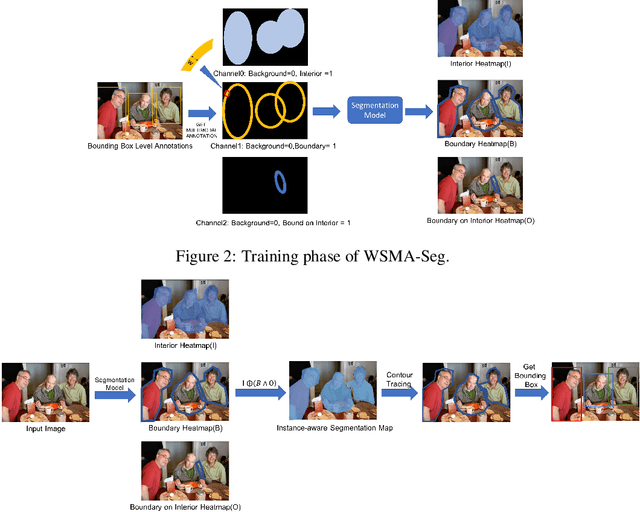

Abstract:Region proposal mechanisms are essential for existing deep learning approaches to object detection in images. Although they can generally achieve a good detection performance under normal circumstances, their recall in a scene with extreme cases is unacceptably low. This is mainly because bounding box annotations contain much environment noise information, and non-maximum suppression (NMS) is required to select target boxes. Therefore, in this paper, we propose the first anchor-free and NMS-free object detection model called weakly supervised multimodal annotation segmentation (WSMA-Seg), which utilizes segmentation models to achieve an accurate and robust object detection without NMS. In WSMA-Seg, multimodal annotations are proposed to achieve an instance-aware segmentation using weakly supervised bounding boxes; we also develop a run-data-based following algorithm to trace contours of objects. In addition, we propose a multi-scale pooling segmentation (MSP-Seg) as the underlying segmentation model of WSMA-Seg to achieve a more accurate segmentation and to enhance the detection accuracy of WSMA-Seg. Experimental results on multiple datasets show that the proposed WSMA-Seg approach outperforms the state-of-the-art detectors.
FoxNet: A Multi-face Alignment Method
May 15, 2019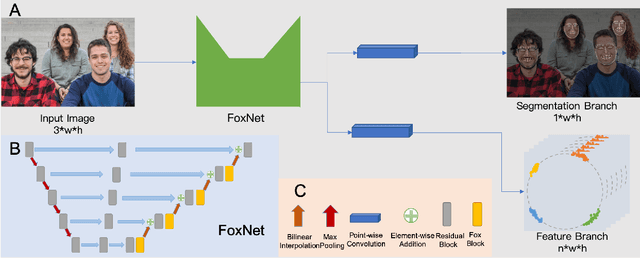

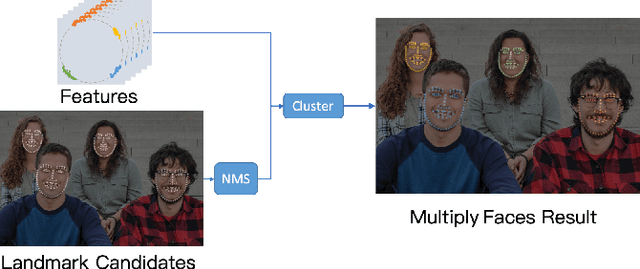
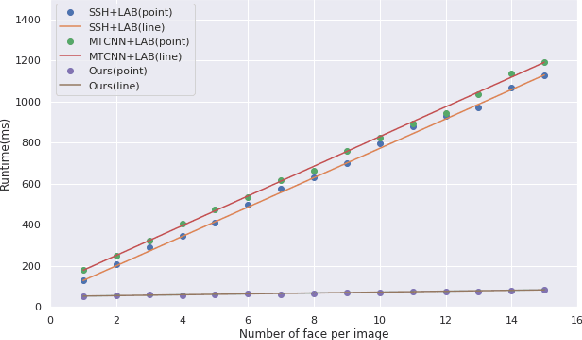
Abstract:Multi-face alignment aims to identify geometry structures of multiple faces in an image, and its performance is essential for the many practical tasks, such as face recognition, face tracking, and face animation. In this work, we present a fast bottom-up multi-face alignment approach, which can simultaneously localize multi-person facial landmarks with high precision.In more detail, our bottom-up architecture maps the landmarks to the high-dimensional space with which landmarks of all faces are represented. By clustering the features belonging to the same face, our approach can align the multi-person facial landmarks synchronously.Extensive experiments show that our method can achieve high performance in the multi-face landmark alignment task while our model is extremely fast. Moreover, we propose a new multi-face dataset to compare the speed and precision of bottom-up face alignment method with top-down methods. Our dataset is publicly available at https://github.com/AISAResearch/FoxNet
Learning with Collaborative Neural Network Group by Reflection
Jan 20, 2019Abstract:For the present engineering of neural systems, the preparing of extensive scale learning undertakings generally not just requires a huge neural system with a mind boggling preparing process yet additionally troublesome discover a clarification for genuine applications. In this paper, we might want to present the Collaborative Neural Network Group (CNNG). CNNG is a progression of neural systems that work cooperatively to deal with various errands independently in a similar learning framework. It is advanced from a solitary neural system by reflection. Along these lines, in light of various circumstances removed by the calculation, the CNNG can perform diverse techniques when handling the information. The examples of chose methodology can be seen by human to make profound adapting more reasonable. In our execution, the CNNG is joined by a few moderately little neural systems. We give a progression of examinations to assess the execution of CNNG contrasted with other learning strategies. The CNNG is able to get a higher accuracy with a much lower training cost. We can reduce the error rate by 74.5% and reached the accuracy of 99.45% in MNIST with three feedforward networks (4 layers) in one training epoch.
Bandwidth Reduction using Importance Weighted Pruning on Ring AllReduce
Jan 06, 2019



Abstract:It is inevitable to train large deep learning models on a large-scale cluster equipped with accelerators system. Deep gradient compression would highly increase the bandwidth utilization and speed up the training process but hard to implement on ring structure. In this paper, we find that redundant gradient and gradient staleness has negative effect on training. We have observed that in different epoch and different steps, the neural networks focus on updating different layers and different parameters. In order to save more communication bandwidth and preserve the accuracy on ring structure, which break the restrict as the node increase, we propose a new algorithm to measure the importance of gradients on large-scale cluster implementing ring all-reduce based on the size of the ratio of parameter calculation gradient to parameter value. Our importance weighted pruning approach achieved 64X and 58.8X of gradient compression ratio on AlexNet and ResNet50 on ImageNet. Meanwhile, in order to maintain the sparseness of the gradient propagation, we randomly broadcast the index of important gradients on each node. While the remaining nodes are ready for the index gradient and perform all-reduce update. This would speed up the convergence of the model and preserve the training accuracy.
 Add to Chrome
Add to Chrome Add to Firefox
Add to Firefox Add to Edge
Add to Edge